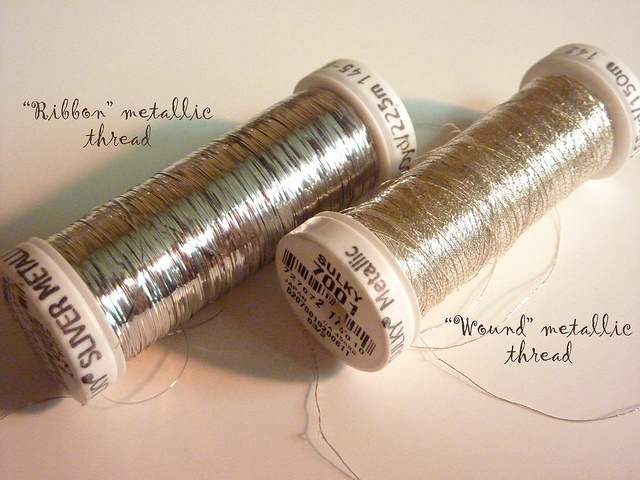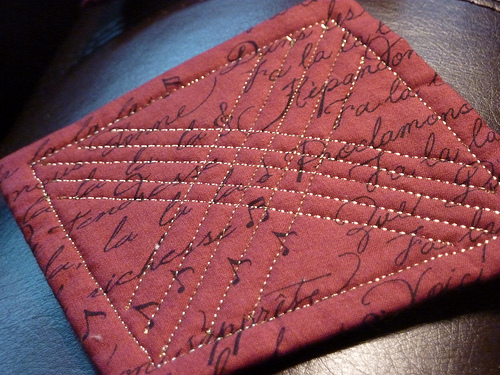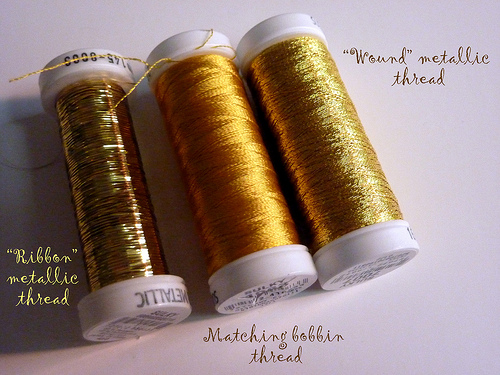The Basics of Metallic Thread
Hi all! A member of my quilt guild was asking a few questions about metallic threads, and since I love them, I thought I would give a few tips here... First of all, there are two main kinds of metallic threads. I like to call them "ribbon" metallics (these look like mini Christmas ribbons you would tie around gifts) and "wound" metallics (if you were to take this thread apart, there are multiple fibers wound together, or around another sturdier fiber of some type running through the middle). Here's a few photos so you can hopefully get my meaning:
- Ribbon metallics have a much bolder, brighter look to them. They are really shiny. Use them in blank areas to show off your quilting and their holiday feel. I think the quilting should be the star of the show when you use ribbon metallics:
- Wound metallics have a subtler look and work really well for all-over quilting patterns:
General metallic thread tips....
I use Sulky threads for all of my quilting, and they have a number of specialty threads available, including monofilament and metallic threads. There are a number of other brands which carry metallic threads as well, but I love that I can get these at Jo-Ann's. Most quilt stores don't carry these threads, and I don't like ordering thread online!! If you're looking for something else, Judi at Green Fairy Quilts uses Superior Threads metallic thread. Check out her amazing work in silver and gold.
- Check your needle! You should be using a metallic needle. The thread stand (or website of the thread company) should specify what size (for example, the Sulky thread stand indicates you should use a 90/14 metallic needle). Confused? Don't be! Look in the needle aisle, and you'll see that there are a ton of kinds of needles. I always have a pack of 80/20 all purpose needles, 90/14 quilting needles, and 90/14 metallic needles on hand. There are needles for every purpose under the sun, but just follow the labels and you'll be just fine :).
- Use a matching, non-metallic thread in your bobbin.*
*though you can take this advice with a grain of salt...see those Christmas coasters at the top of the post? I used a ribbon metallic in both the bobbin and top thread, and it worked wonderfully! It's just, you know....expensive thread. It saves money to use a regular thread in your bobbin for larger projects. You usually won't find a perfect match because that metallic look really isn't reproducible, so just get something close.
- If you start skipping stitches or breaking your thread, slow down a bit! Specialty threads can be more fragile than regular thread.
- Use a test swatch to practice quilting with your new thread. See what works best for you and use the practice swatch to work out any tension issues ahead of time. Adjusting your tension for metallics is the same for regular threads - trial and error until there are no loops on either side!
- Again, test ironing, washing, and drying a sample quilted with your thread before attacking your actual project (you can skip any of these if you won't be doing them to your final project, though).
Don't be afraid - I'm no expert at machine quilting, and I've never had too much trouble getting metallics to work!





